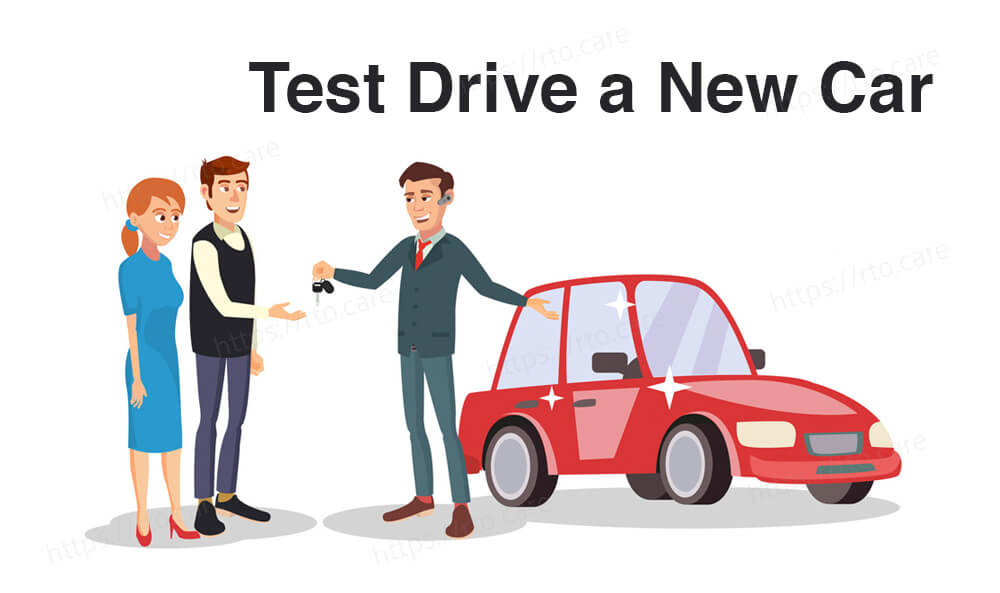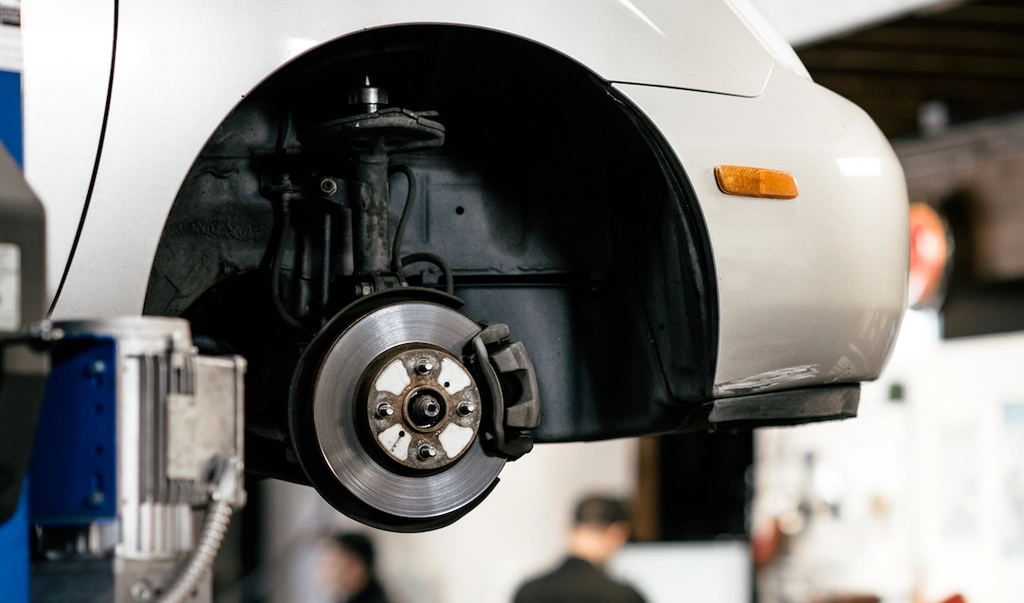The brake shudder can range from a slight tremor to an alarming shake that makes driving scary. Your car’s steering wheel shakes during braking usually point to specific issues – warped rotors, worn brake pads, or dry guide pins. The problem could be as simple as rust on the hub surface or as serious as severe disk distortion from overheating.
The good news? You can fix many of these problems with simple tools and mechanical knowledge. Rotor replacement typically needs new brake pads and greased guide pins – a task that any committed DIYer can handle.
Let me show you how to diagnose and fix these common brake problems step by step. You could save hundreds in repair costs. We’ll get your car back to smooth, safe stopping in no time!
Diagnosing the Cause of Brake Shakes
A shaking car during braking needs the right diagnosis before you start any repairs. My experience shows that brake vibrations usually come from a few common problems. You can diagnose these issues with simple knowledge and basic tools.
Check for warped rotors
Warped brake rotors cause most cars to shake when braking. These rotors don’t actually bend – they develop uneven surfaces called Disk Thickness Variation (DTV). You’ll notice these signs:
- Pedal vibration gets worse at higher speeds
- The steering wheel shakes as you brake
- You hear rhythmic groaning or thumping sounds
Take off the wheel and look at the rotor surface to spot any bluing (discoloration) or uneven wear patterns. A precise way to check involves mounting a dial gage against the rotor face and rotating it to measure runout. Readings above 0.001-0.003 inches usually signal a problem.
Inspect brake pads for wear or contamination
Brake pads wearing unevenly often make your car shake. The safe thickness should stay between ¼ and 3/16 inches. Oil, grease or brake fluid on the pads can make them grab and vibrate. Look for glazing (shiny surfaces) and check if the wear looks even across the whole pad.
Test caliper guide pin movement
Caliper guide pins should move easily when pushed by hand. Stuck pins stop the caliper from floating properly and create uneven pad pressure. Stiff or frozen pins need cleaning and fresh lubricant. Bad pins make the caliper apply pressure unevenly, which leads to juddering when you brake.
Look for uneven rotor tightening
Wheel lug nut torque can surprisingly cause brake vibration. Rotors can warp from over-tightening or inconsistent torquing patterns. Use a torque wrench and follow the star pattern to tighten wheel nuts. Clean all mounting surfaces on the hub and rotor to remove rust and debris before installation.
Check for wheel misalignment or suspension issues
Bad alignment or suspension parts might be the culprit if brake components look fine. Worn tie rods, ball joints, or wheel bearings can show up as shaking during braking. Bad wheel alignment leads to uneven tire wear that makes vibrations worse when you apply the brakes.
Tools and Safety Prep Before You Start
The right preparation makes brake repairs both safe and successful. Your car’s shaking problem while braking could get worse if you work on brakes without proper tools or safety measures.
Essential tools for brake repair
You’ll need these simple mechanical tools to access and work on your brake components:
Socket and wrench set – To remove lug nuts and caliper bolts
Screwdrivers – Both flathead and Phillips for various fasteners
Brake caliper tool or C-clamp – To push brake pistons back when installing new pads
Torque wrench – To tighten lug nuts correctly and prevent your rotor from warping
Jack and jack stands – To lift and support your vehicle safely Your specific brake system might need these specialty tools:
Brake line wrench to disconnect hydraulic lines Torx or Allen wrenches for some caliper designs Brake bleeder kit to bleed the system
How to safely lift and support your car
A jack alone won’t keep you safe under your car! Here’s what you need to do:
- Choose solid, level ground and set your parking brake
- Use bricks or wheel chocks to block the wheels staying on the ground
- Check your owner’s manual for the right jack points to avoid damage
- Raise the vehicle just enough to fit jack stands under proper support points
- Let the car rest on jack stands and shake it to make sure it’s stable
Precautions before working on brake components
Take these safety steps before investigating why your steering wheel shakes during braking:
- Protect your eyes from debris and brake dust with safety glasses
- Use a dust mask so you don’t breathe in toxic brake dust
- Keep your hands safe with nitrile gloves from chemicals and contaminants Let hot components cool down if you’ve driven the car recently
- Keep brake fluid away from bare skin – it’s toxic and absorbs through skin
- Clean mounting surfaces well to avoid vibration during reassembly
Good preparation will keep you safe and help you fix your car’s violent shaking problem while braking effectively.
Step-by-Step DIY Fix for Brake Shakes
Your car shakes when braking need a step-by-step fix that targets the usual suspects. Here’s a simple 5-step repair process that deals with warped rotors and worn parts.
1. Collapse the caliper and remove the wheel
Start by loosening the lug nuts while your car sits on the ground. Lift the vehicle and secure it properly on jack stands. Take the wheel off completely. The bleeder valve on the caliper needs opening to let dirty brake fluid escape instead of pushing it back through your brake system. A C-clamp or specialized caliper tool will help compress the piston back into the caliper body. The bleeder valve needs tightening to specification after compression.
2. Remove caliper and bracket
Find the caliper mounting bolts (typically 14-15mm) and take them out with care. Lift the caliper away from the rotor and secure it with wire or an S-hook – the brake hose should never support its weight. The caliper bracket bolts (often 18-21mm) connecting the bracket to the knuckle come off next. Keep these parts separate since some manufacturers want you to use new ones during reassembly.
3. Take off the rotor and inspect hub
The rotor should pull straight off the hub. Stubborn rotors might need gentle taps around the center with a rubber mallet. The hub surface needs checking for rust or debris and a good cleaning with a wire brush. Look at the old rotor’s minimum thickness specifications (usually stamped on the rotor edge) and watch for uneven wear, cracks, or burn spots that show overheating.
4. Install new rotors and brake pads
New rotors need cleaning with brake cleaner to remove protective coating. Set the rotor on the wheel hub and line it up with the lug studs. One lug nut holds it temporarily in place. The new pads’ metal portion needs a thin layer of brake grease – keep the friction material clean. Put the pads in the caliper bracket with any hardware included.
5. Grease guide pins and reassemble
The caliper guide pins need removal, cleaning, and inspection. Apply silicone-based brake lubricant to pins and rubber boots. Put the caliper bracket back and torque bolts to specification (typically 125 ft-lbs). The caliper goes over the pads with mounting bolts secured (around 23 ft-lbs). The wheel goes back on last. Lower the vehicle and torque lug nuts in a star pattern.
Final Checks and Test Drive

Your brake repair job needs a final verification to make sure everything works safely. These significant steps will give a properly functioning braking system.
Refill brake fluid and pump the brakes
The master cylinder reservoir needs checking after brake work. Fresh brake fluid has a light yellowish tint. Dark brown or black fluid means you need a complete fluid flush instead of just adding more. Clean any dust from the cap area before opening the reservoir to avoid contamination.
Add the right DOT-specified fluid (check your reservoir cap for DOT 3 or DOT 4) up to the “MAX” line. The reservoir
should be about 2/3 to 3/4 full. The brake pedal needs several pumps until it feels firm. This step removes air bubbles that might have entered during your brake work.
Reinstall wheels and torque lug nuts
The wheels need proper installation to prevent future vibrations. Set each wheel squarely on the hub and hand-tighten the lug nuts. A torque wrench adjusted to your vehicle’s specifications helps tighten them in a star pattern rather than going around in circles. This method creates even pressure and stops rotor warping.
Auto clubs suggest checking lug nut tightness after driving 50-100 kilometers. The original torque might loosen slightly after the first drive, so this step keeps your wheels securely attached.
Perform a test drive to confirm fix
A thorough test drive right after repairs shows if the shaking is gone. Turn off your radio and HVAC system to hear any unusual noises better. Start with gentle braking and work up to firmer stops. The steering wheel should stay steady.
Watch for these signs during your drive:
Vibrations or pulling to one side while braking Strange noises from badly installed parts
Brake pedal firmness without sponginess
Car manufacturers recommend a 20-30 minute drive on different roads at various speeds. Find a safe, open area to test a few quick stops. This confirms your braking system works without any violent shaking.
Conclusion
A shaky car during braking doesn’t always mean an expensive mechanic visit. This piece walks you through common causes of brake vibrations and gives budget-friendly fixes you can do yourself. Taking care of problems like warped rotors, worn brake pads, or seized caliper pins quickly will prevent repairs from getting pricey later.
Your safety must come first during brake work. The right vehicle support, tools, and protective gear are must-haves before you start these repairs. Proper torque specs and cleaning methods will make your DIY fix last longer and work reliably.
Most brake vibrations come from basic mechanical issues, but some cases point to bigger problems. Your car might need a professional mechanic if it keeps shaking after you try these repairs. The diagnostic knowledge from this guide will help you talk better with your mechanic and save hundreds on unnecessary work.
Regular brake maintenance stops many of these problems before they start. You’ll get smoother stops, safer driving, and a longer-lasting brake system by checking components during tire rotations and fixing small issues early. The old saying rings true with brakes – prevention works better than cure.
FAQs
Q1. What causes a car to shake when braking at high speeds?
The most common cause is warped brake rotors. As rotors heat up at higher speeds, any warping becomes more pronounced, leading to vibrations when braking. Other potential causes include worn brake pads, stuck brake calipers, or suspension issues.
Q2. How much does it typically cost to fix brake shaking?
The cost can vary depending on the specific issue and your location, but replacing brake rotors and pads typically ranges from $300 to $800 for parts and labor. Doing the work yourself can significantly reduce the cost if you have the necessary tools and skills.
Q3. Is it safe to drive with shaking brakes?
While you may be able to drive short distances, it’s not safe to continue driving with shaking brakes for an extended period. The vibrations indicate a problem that could worsen and potentially lead to brake failure. It’s best to have the issue diagnosed and repaired as soon as possible.
Q4. Can I fix shaking brakes myself or should I take it to a mechanic?
If you have experience with basic car maintenance and the right tools, replacing brake rotors and pads is a manageable DIY job for many people. However, if you’re unsure about your abilities or the exact cause of the problem, it’s safer to have a professional mechanic diagnose and repair the issue.
Q5. How can I prevent my brakes from warping in the future?
To help prevent brake warping, avoid sudden stops from high speeds when possible, don’t hold the brake pedal down when stopped for long periods (especially after heavy braking), and be cautious about driving through deep water immediately after heavy braking. Regular brake maintenance and using quality parts can also help extend the life of your brakes.



